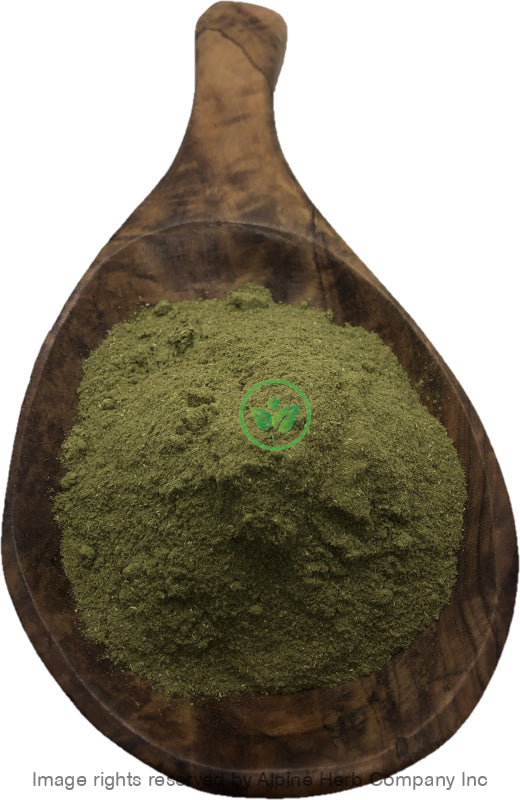Parsley Ground Alpine Herb Company Inc.
$ 8,49 $ 5,09
Botanical Name: Petroselinum sativum
Common Name:
- English: Parsley
- Also, known as: Parsley Breakstone, Garden Parsley, Rock Parsley, Baqdunis, Maqdunis, Magdanoz, Ou qin, Peršin, Petržel, Persille, Persilja, Persil commun, Blattpetersilie, Petersilie, Maïntano, Maïntanos, Makedonisi, Persemolo, Petrosilia, Petrezselyem, Prezzemolo, Paseri, Pa sul li, Vanns baraing, Pietruszka zwyczajna, Salsa, Petrushka, Peršun, Peteršilj, Petržlen záhradný, Perejil, Bladpersilja, Persilja, Phak chi farang, Maydanoz, Rau mùi tây
Origin: Egypt
Harvested: Cultivated
Parts Used: Leaves
General Information:
Petroselinum sativum is a member of the Apiaceae family of plants. Relatives of this common culinary herb include the garden vegetables carrot, parsnip, and celery. Parsley is a biennial plant with a fleshy, spindle-shaped root, and a round, striated, erect, smooth, branching stem. The bright green leaves are feather-like in appearance, tri-pinnate, finely divided and borne on long, channeled petioles; the leaflets are rhomboidal-ovate, wedge-shaped at the base, deeply incised, the segments mucronate and sometimes rounded. Some varieties are flat-leafed, others are more compact and curlier. The upper leaves gradually become more entire and narrower, till the uppermost are simply ternate with linear segments. Diminutive five-petaled flowers are yellow-green and borne in dense, flat-topped clusters. They bloom in midsummer. The gray-brown seeds are tiny, ribbed and ovate. Parsley can grow as much as 3-4 feet high in its second year as the flower-bearing stems become nearly leafless and reach for the sun. The fruit is ovate, about a line long, corn pressed, pale greenish-brown, the back occupied by three elevated, pale primary ridges, the two others quite on the margin at the side.
The plant has a grateful aroma. The seeds, herb, and root, are the medicinal parts; the root has rather an agreeable odor, and a saccharine, slightly spicy taste, and should be used while fresh. The root and herb contain small quantities of a volatile oil; larger quantities are contained in the seeds.
How to use:
Hot Infusion:
The basic method for dried herbs and flower is, take 2-3 tablespoons of dried herb in a cup or teapot. Pour hot water over it and cover it with lid for 10-30 minutes. Hot water is needed to draw out the antioxidants, enzymes, vitamins, flavonoids, and volatile oils from the botanicals. Strain and squeeze out as much as liquid as possible and enjoy!
Tips:
- You can sweeten your herbal tea with a bit of honey, natural fruit juice, stevia leaves powder and or licorice root powder.
- You can make ice cubes or pops by freezing tea in ice trays or pop molds.
Precautions:
You should consult with a qualified healthcare practitioner before using any herbal products, particularly if you are pregnant, nursing, or on any medications.
All information on this website is for educational purposes ONLY.
This information has not been evaluated by Health Canada.
This information is not intended to diagnose, treat, cure, or prevent any disease.
| Unit Size | 100g, 200g, 400g, 1kg |
|---|
Prompt shipping and expert packing
Thanks to our longstanding association with UPS FedEx DHL as well as other leading global carriers, we can offer a variety shipping options. Our warehouse staff is highly trained and will be able to pack your goods in accordance with our precise and exact specifications. Your items will go through an exhaustive examination before they will be securely packaged before being delivered. We ship to hundreds of thousands of customers daily in different countries. This is a sign of our determination to become the largest online retailer worldwide. Warehouses and distribution centers are located throughout Europe as well as in the USA.
Note that orders containing multiple items are processed according to the particular item.
We will thoroughly inspect all items ordered before shipping. Most orders are shipped within 48 hours. The delivery time will be between 3 and 7 working days.
Returns
The stock market is always changing. It's not entirely managed by us since we're involved with several entities, including the factory and the storage. Therefore, the actual inventory could fluctuate at any moment. Please be aware that it is possible that your order could be out of stock after you've placed your order.
Our policy lasts for 30 days. If it's been more than 30 days since the date you purchased your item We're sorry to say that we can't offer you a full exchange or refund.
You can only return a product if it is unused and still in the same state as when you received it. The item should be in the original packaging.
Related products
Spices Powder
Spices Powder
Spices Powder
Spices Powder
Spices Powder
Spices Powder
Spices Powder
Spices Powder
Spices Powder
Spices Powder
Spices Powder
Spices Powder
Spices Powder
Spices Powder
Herb Powder
Spices Powder
Spices Powder
Spices Powder
Spices Powder
Spices Powder
Spices Powder
Spices Powder
Spices Powder
Spices Powder
Spices Powder
Herb Powder
Spices Powder
Spices Powder
Spices Powder


































